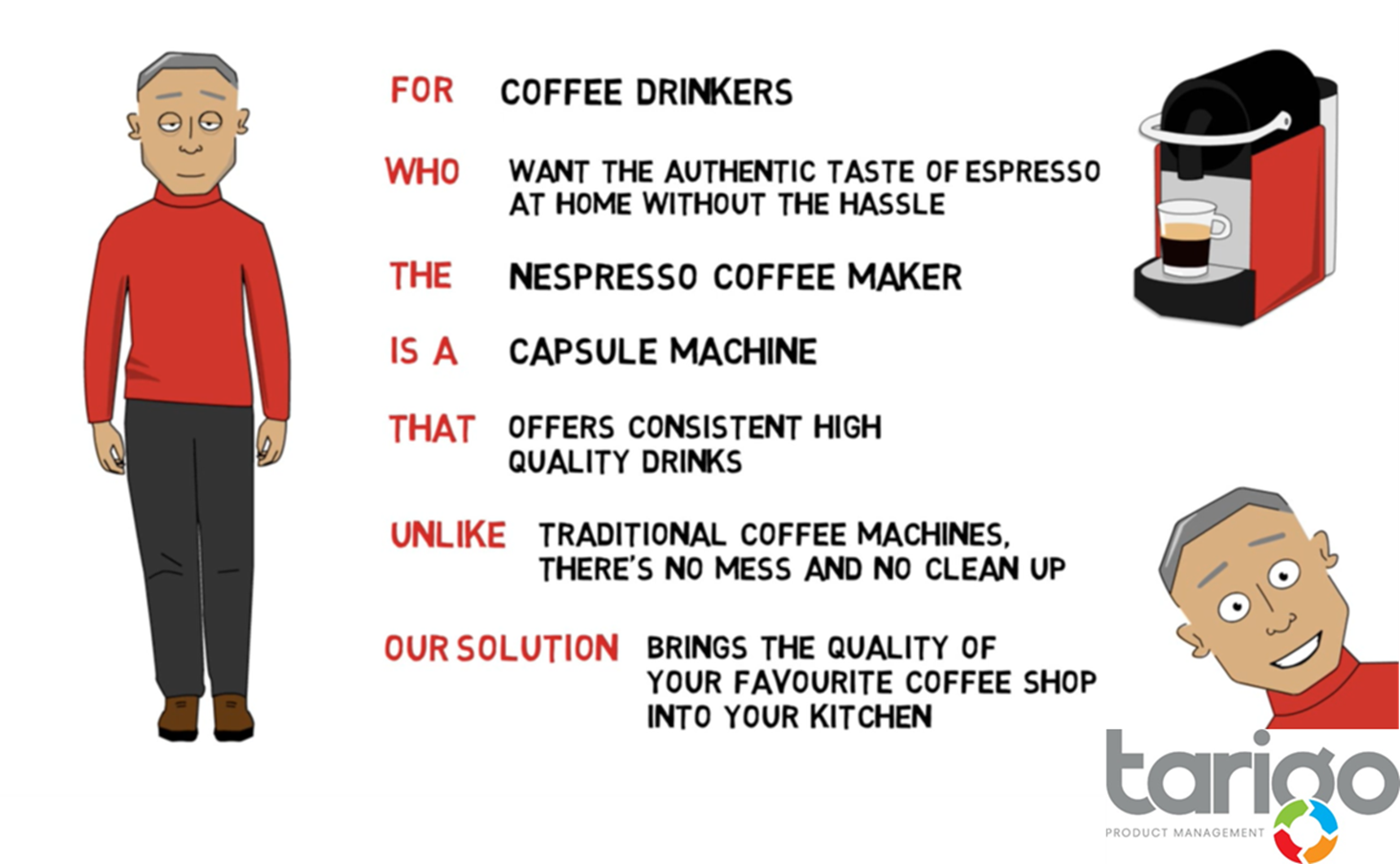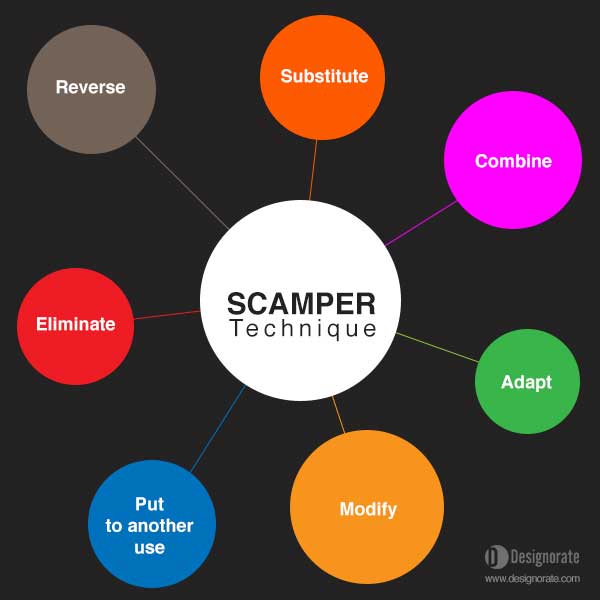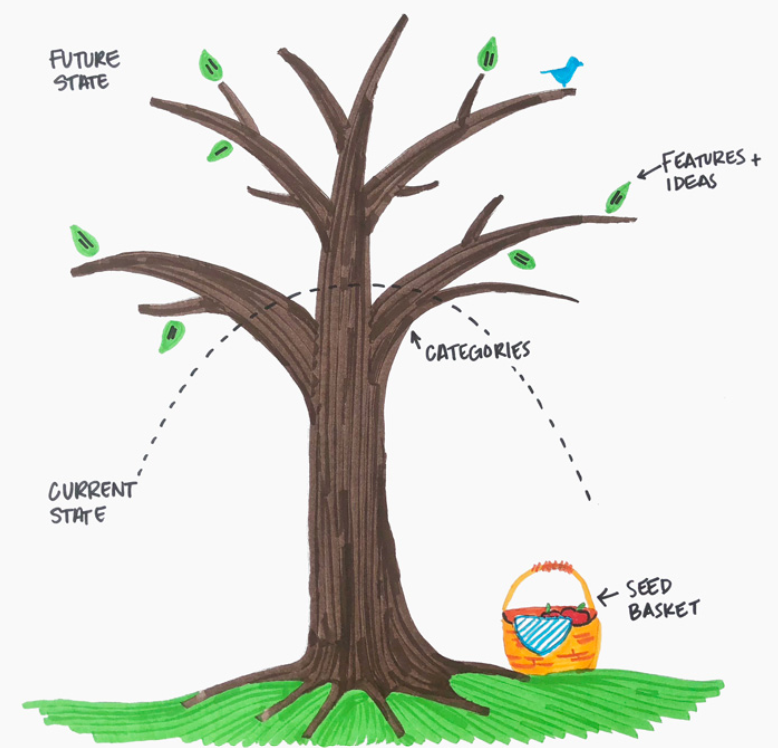Your daily dose of Product Management Goodness
Want to know more?
We would love to hear your questions and suggestions for topics you would like to see covered in our future blog posts, so don't be shy and get in touch!

Agile won't fix your world
A good development process doesn’t make a good product
Many teams seem to turn to agile models in the hope that it will fix product problems. And although agile processes are great, they don’t generate great products in isolation.
Two points:
1. A bad idea stays a bad idea no matter how well it’s developed - it’s just a well executed bad idea.
2. Product is more than technology - think naming, pricing, positioning,
etc. Agile gives you only a small part of what you need for product success.
The product management lesson? Agile won’t fix your world. It might make one small part a bit more predictable.
read more
Marginal gain
Marginal gain can lead to market dominance
The product managers I meet are an ambitious bunch, often looking for ways to drive huge growth and dominate their market. My response sometimes surprises them “Huge product success often lies in the tiny detail”. Let me explain. In many markets the difference between product offers is pretty small. Winning in these markets can often be about tiny detail – a slightly better interface, a small feature, a better sales pitch or even a quicker response to a customer email. The point is that in competitive markets the detail counts. Rather than thinking about wholesale reinvention, many product managers should think of marginal gain – small scale improvements that in isolation mean nothing, but in aggregate can help you win. Market dominance can be achieved by being slightly better than your competitor most of the time. So what could you do today to slightly improve your product offer?
read more
Explain it simply
I’m going to get this printed on a t-shirt and give it to the next product manager who starts by telling me their product is complex to explain! Part of the art of great product management is making the complex as simple to understand as possible. Want to test you or your team on simplicity? Then try this; describe your new product offer/feature in 30 seconds or less to a group who are in your market. Wait 10 minutes and the ask them to describe your product offer. Did they remember it? If not, that’s your problem, not theirs.
read more
The most common Persona mistake?
The last few years has seen an increasing use of Personas and User Journeys across Product Management teams. They give us great insight and help us define products that truly meet customer needs. However, I see a common mistake; personas are so often focused solely on the end user. End users are important but they’re not the whole story – those end users won’t get to use your product if it does not make sense to the full value chain. Take a new credit card as an example; Banks would need to offer it and Merchants would need to accept it before consumers could access the value. The value chain will break at its weakest point of value.
read more
PM Health check
How do you review the maturity of a PM function? We use a 360 review:
• People
Without the right team in place it’s impossible to excel. We review the team through capability (Do they have the potential to be a great PM?), skills (Do they have the right PM experience?) and scale (Is there enough of them?)
• Processes
We review the full process, reporting, RACI, etc, viewing the process in terms of fit to your business (Risk vs reward vs scale vs speed vs certainty vs evidence vs innovation)
• Tools.
Without standardisation, product managers use such a wide variety of tools that it becomes increasingly difficult for a management team to make reasoned decisions – they cannot do an ‘apples to apples’ comparison. We review the complete process suite for robustness, ease of use, visibility and adherence.
• Environment
A great PM team, with the right processes, tools and templates can still fail to thrive because of the environment - stakeholders, supporting processes and management not aligning with product. We review stakeholder teams leadership engagement and adjacent processes to asses alignment.
read more

Value Propositions
Four tips for building outstanding Value Propositions
Building a really compelling value proposition is central to great Product Management – a great product needs great messaging to thrive in a market.
So how do we do it? The start point is to use a framework like the one in the image below, complete it, and then review it with these four simple rules:
1. Does it clearly identify a targetable market?
Know who you’re aiming at
2. Does it define a real and substantial need in that market?
Fix a problem they want you to fix
3. Is there clarity in the proposition and the value it delivers?
The market needs to understand what you’re trying to sell to them and why
4. Is there a defensible point of difference?
The market need to know why they should choose your product.
read more
Be Curious
Are you celebrating any holidays this season?
Don’t you think this is a great question, there are lots of holidays in November and December and I would encourage us all to get curious and ask: “Are you celebrating any holidays this season”? If so, which holiday?
In product it’s our job to be curious and know our customers and markets, so open up the conversations, it will at the very least, help you learn more about your colleagues and potentially set you up to have deeper conversations about other work-related topics (i.e. your colleague may have an innovate idea or help solve problems).
In product we don’t hide behind generic messaging so “Happy Holidays won’t do! Find out who is celebrating and what, and shout with glee, Happy Hanukkah, Happy Diwali, Merry Christmas, Happy Kwanzaa, and Happy Thanksgiving!
Enjoy!
read more

Scamper
How do we go through innovation?
Over the next few days I'm going to share few blogs which will take you through those steps.
Step 4 of 4
SCAMPER
If how might we feels tough to start with you can try this technique, it's useful to switch between the two, being sure to use both!
Scamper is a special brainstorming technique that we talk about within design thinking, this is because it uses prompts, similar to how might we, to open up the space for different ways of thinking about problem statements and the solutions we come up with! Again we have a problem statement to work from, but we can also use this technique to brainstorm internal processes, product features, or anything that we can look at to improve its efficiency or come up with new ideas! The prompts for SCAMPER give us instruction in how we approach our ideas – a more structure brainstorming map in its traditional sense. The SCAMPER stands for, meaning the prompts used are, Substitute – Combine – Adapt – Modify – Put to Another Use – Eliminate – Reverse. Using these prompts we can think about ideas or current ideas/processes in a completely different fashion and allows us to understand the implications of applying our answers to these prompts!
read more

How might we (2)
In part ii. Of How might we – lets looks at the process and what to do if this task starts to feel difficult! so firstly we need our problem statement, similar to a user story, that displays an important problem we want to solve and then we can complete the first step of the how might we. as part of the HMW framework we have a list of prompts, each of which give us a foundation to build how might we questions that position the problem in a way that allows us to explore many different perspectives – for example one HMW prompt would be – amp up the good. We have the rest of the prompts below built out with questions and answers to a problem statement, a stressed father of three taking 3 young children through the airport who wants to make that experience less stressful so they holiday can enjoy there without extra pressure or stress. You can see below how we build out these questions using the prompts and the start to brainstorm ideas to answer these questions! Finally, if these question feel difficult to answer – first make sure your problem statement refers to the problem and not the solution – then we check our questions are well balance, not enough HOW and we look at the question too broadly making it difficult to answer and to much WE focuses in on us as a product team to much and makes the scope to narrow! Try to find balance in the questions!
read more

How Might We?
How do we go through innovation?
Over the next few days I'm going to share few blogs which will take you through those steps.
Step 2 of 4
How might we?
How might we is a great and fun exercise, there are some language considerations, how this exercise works and a little advice in case this feels difficult to complete. So lets jump in!
So first, the language is set up in a way to allow us free scope and explore any ideas no matter how extreme or silly they might first seem.. ‘How’ address the problem at hand, our ideas need to address the problem statement. ‘Might’ is used to create a safe environment for all ideas no matter the scope, this is to encourage a large amount of ideas to be shared whether you think your own ideas are worth sharing or not, the key is in the might. And finally ‘We’ is there because this is an inclusive exercise to be done with a cross functional team, across the product group, however you might set it up. This exercise is a group effort in order to fill that quantity aspect. Check back tomorrow for this second part on how might we!
read more

Brainstorming
How do we go through innovation?
Over the next few days I'm going to share few blogs which will take you through those steps.
Step 1 of 4
Special Brainstorming
Special brainstorming is a method we discuss when we would like to generate a large number of ideas. We generally do this in teams or groups, as we aim to encourage active listening and shared discussion of ideas, where no idea is bad. First, we start with a problem that has been identified, be sure this has been prioritized, validated, and is clearly defined as a problem statement. Then we can use a number of brain storming techniques along side one another in order to generate a large number of diverse and thought provoking ideas. By doing so, we look to invoke innovation by using a large quantity of ideas as stepping stones towards a quality idea! Once we have completed our various brainstorming techniques, we then need to log and record our findings, as well as cluster together any gained ideas.
As a note, the language we use in these sessions is critical, as we are trying to promote free thinking based on our problem statements. So, creating a comfortable and confident environment where we feel we can suggest our most crazy ideas is critical to this and us getting through large amounts of ideas.
read more
A good Product Manager
How do you identify a good Product Manager?
I'm constantly asked what makes a great Product Manager. In my experience, a strong Product Manager is the CEO of their solution and gets involved in all aspects from inception to launch, and then in-life management. Due to this I am a strong believer in ‘Hire for attitude, train for skill’. If someone has the right behaviors, then you can teach them the skills to be a great product manager.
My approach to interviewing is firstly to understand their personality, so :
1) Can they fit into the team dynamic? (disruption of the ‘status quo’ to strengthen is ok as well)
2) What does their personality bring to the team that is currently missing?
3) Do I think they can work within a team, yet be focused enough to work on their own and drive the solutions that they will be managing?
4) Are they tenacious and can they prove this?
5) Have they got the right social skills to be able to work with a number of disciplines around the company?
6) Are they someone that thrives on ownership and responsibility?
An initial 1-2-1 personal interview approach allows the candidate to understand if the company is the right fit for them. They get to know my expectations and the companies.
read more

Customer led VS Customer centric
What’s the difference between being customer led and customer centric, if they can tell us what they want then surely, we should listen?
A great example is Henry Ford.
If he had been customer led he would have been a horse breeder. A very successful one – procuring the fastest, strongest and most resilient for his stock to solve the problem of travelling long distances in the shortest possible time.
However, Henry Ford was an innovator. He was customer centric. He thought outside the box, understood that long distance journeys needed to be quicker, more efficient and more comfortable than riding a horse. His customer centric thinking inspired to the idea of using a mechanically powered vehicle that creates motion and is easy to operate. Enter the Motor Car!
read more

Product Tree
Autumn Is here!
It’s a beautiful time of year.
The days are shorter, there’s a nip in the air, and it’s time to cut back and prune your Product Tree.
Pruning is a common technique to gardeners, and it’s also a data compression technique in machine learning and search algorithms. I am advocating it’s also a useful skill to deploy against your product. Entrance the Product Tree!
First sketch out your bare tree, then invite the group to spend a few minutes writing their desired features on Post-its and placing them on the tree. The features placed closest to the trunk of the tree are the near- term priorities, whereas the features placed on the outer ends of the branches signify long-term future plans. This visual representation helps the group prioritise. As we discuss groups of features emerge, and we cluster them around labelled branches.
Some tips: I prefer to label branches as I go as opposed to at the beginning, also do remember this is a prioritisation exercise and not an idea generation activity. Keep focused on what is feasible, desirable, and viable.
read more

Talking the right language
Ever feel your message isn’t getting through to your customer? It could be that the message is wrong, but often it’s not the message, but the delivery – language that doesn’t resonate with your target market. Here’s a simple example; you want to encourage your children to exercise more. Which statement is more likely to work: ‘ Shall we go for a long ride on our bikes to improve our cardiovascular fitness’ or
‘Let’s see who can get muddiest on the canal path!
’’Simple rule of product management – when you talk to your customers, speak in a way that makes sense to them not in language that impresses your boss.
read more
Check out the Archive